Dr Vino's wine blog
wine talk that goes down easy
[Yellow Tail] contest, Calistoga, Craggy Range, Tour d’Argent – sipped and spit
SIPPED: user feedback
[Yellow Tail], the ubiquitous Australian wine, wants your help! The producer has decided to open the naming of their new, unoaked Chardonnay up to readers. The contest may have risks as this article points out, the crowd sourcing initiative for naming the new blend of Vegemite and cream cheese (really, why ruin good cream cheese?) drew 48,000 entries, but the winner drew “near universal” condemnation. The [Yellow Tail] contest comes with a prize–[Yellow Tail]! Make your name suggestions in the comments here (sorry no, prize).
SIPPED: place names
Chateau Montelena and other wineries in Calistoga will soon be able to put Calistoga on the label. After a protracted struggle over whether wineries with Calistoga in the name would have to use exclusively Calistoga fruit, federal authorities granted AVA status to the area in the north of Napa. Wineries with Calistoga in the name have three years to begin using grapes from Calistoga. [SF Chronicle]
SIPPED: lightening up
When you have a collection of 450,000 bottles, is it time to lighten up? If you’re the owners of the Tour d’Argent restaurant in Paris, the answer is yes to the tune of 18,000 bottles, including some 18th century cognac and Corton from 1895. The auction today and tomorrow is estimated fetch about $2 million, which will aid the restaurant’s bottom line as it feels the tourist slowdown. Apparently, during the occupation, the owners built a fake wall in the cellar to prevent the Nazis from finding some 20,000 bottles. NYT, Telegraph]
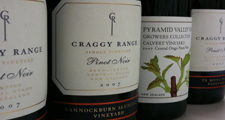 SIPPED: Craggy Range
SIPPED: Craggy Range
I participated in a kiwi Pinot showdown over at Forbes.com Tower. Eric Arnold has the story.
SIPPED: Green certification
A national certification program on various environmental factors have been launched for Australian wine. Quotage from Stephen Strachan from the Winemakers Federation: “The retailers more and more are requiring the companies that are selling to them to be able to come to them with certain proof in terms of their environmental credentials.” [ABC, WFA]
Department of Greenwashing: Ceci La Luna lambrusco
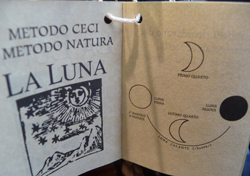 Are some in the wine trade exploiting consumers’ willingness for environmentally friendly products when the practices don’t measure up to more than a pile of manure? Consider an example.
Are some in the wine trade exploiting consumers’ willingness for environmentally friendly products when the practices don’t measure up to more than a pile of manure? Consider an example.
In late summer, The Moment blog at nytimes.com wrote a paean to lambrusco, the purple fizzy wine from Emilia-Romagna. The author had high praise for one in particular: “a rustic biodynamic beauty from Cantina Ceci, whose mild, deep fizz buoys its brooding purple embrace.” At least one New York City retailer also calls the $16 wine Biodynamic, a process of grape growing (and, to a lesser extent, winemaking) that goes beyond organic to synchronize some winemaking practices with the lunar cycle. Several other commentators have called it Biodynamic as well.
While the wine may be tasty, according to correspondence with Demeter Italy, the certifying authority in Italy, none of Cantine Ceci’s wine has ever been certified Biodynamic .
In the case of the Ceci lambrusco, it has the packaging of an artisanal product with twine around the neck and closure. Each bottle comes with a small booklet explaining the phases of the moon and how harvesting occurs while the moon is a mere crescent, as happens both when it waxes and wanes. The wine is called “La Luna,” meaning “the moon.” It does not appear on the producer’s web site.
In correspondence about La Luna, the wine’s importer to the US, Rosalie Sendelbach, said that the wine:
use to be Certified biodynamic until 2007, certification is based on testing each year and also costs quite a bit. its is also some what political. They are considered biodynamic and but did not certified this year. Minimum sulfite is used according to each vintage year and natural sulfite present in the wine during fermentation.
Demeter Italy said, in response to an email query, that no wine has been certified from Cantine Ceci. Three emails over a period of weeks to the winemaker Alessandro Ceci seeking comment about grape growing and winemaking practices at the cantine have gone without reply. Nor has the importer replied to a further request for comment about the response from Demeter Italy.
The wines from Cantine Ceci have received praise from Gambero Rosso Italian Wines and the Italian Sommeliers’ Duemila Vini: both list the Ceci estate and its many wines and consider it important, but there is no mention of organic or biodynamic production.
Jamie Wolff, a partner of Chambers Street Wines in Manhattan, a retailer that specializes in organic and natural wines, says “we do find more and more ‘green’ wines that make us raise our eyebrows.” He continued, “it’s important to get to know the people and visit so you get to know their intentions.” Chambers Street sells the “La Luna” lambrusco, which Wolff said was popular. They do not market the wine as Biodynamic.
Tom Maresca, a longtime observer of the Italian wine trade, had this to say when queried about the situation:
Italians by and large love Americans: they think we are warm and friendly. Unfortunately, some also believe that we are absolutely stupid about wine, and those people really think they can sell us anything. So this could well be a reputable company dealing with the American market as it believes it must be dealt with, and consequently seeing no harm in a little imaginative embroidery. Or it could be more consciously larcenous than that. Or, finally, it could be exactly what it says it is. I’m afraid I can’t really tell.
So what is a consumer to do? The shopper in a wine store can’t independently verify the provenance of every bottle she picks up. There needs to be some truth in marketing, but who can verify the claims? Independent agencies who extract fees? Government regulators? Wine shop owners? Critics? Bloggers?
Incidentally, I inquired with another Italian winery recently about their organic program in the vineyards. By return email within an hour, I had–without even asking–a copy of their certificate in my inbox. Three cheers for transparency. Read more…
Box vs bottle blind
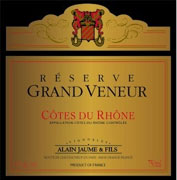 Does a wine from a box taste any different from the same wine in a bottle?
Does a wine from a box taste any different from the same wine in a bottle?
I recently led a tasting and we were able to put this question to the test. I poured the Domaine Grand Veneur, Cotes du Rhone, reserve, 2007 from a bottle (retail: $14) and a three-liter box ($45) and served them blind in two glasses. (search for this wine)
The assembled group couldn’t really discern one from the other. While everyone agreed that the wine was a good value, some people preferred one over the other but the reasoning was all over the map. Although this sounds like a non-finding, it is interesting that neither format outpaced the other even though one format is decidedly less expensive per ounce/glass.
I look forward to trying this experiment again but it is difficult to find the exact same wine packaged in two different formats. Domaine des Estezargues, Cotes du Rhone 2007 and apparently there’s one from Washington State; hit the comments if you’ve done a tasting like this or know of other wines in both formats for our further experimentation.
Home field disadvantaged – NYT on SF wine lists
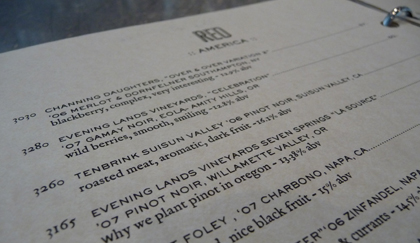
In a piece entitled, “Eat Local; Drink European,” Eric Asimov of the NYT tackles the apparent paradox at the core of some San Francisco restaurants: while the menus extol fresh local produce, the wine lists are often dominated by wines from Europe.
Why? One wine director, Chris Deegan of the restaurant Nopa, says “I find myself drinking European wines most of the time and pairing European wines more successfully with the food.” Mark Ellenbogen, wine director of a top Vietnamese restaurant, says, ““At Slanted Door, you need low-alcohol, high acid wines with residual sugar, and they don’t come from the New World.â€
Asimov continues the topic of the unwieldy pairings many American wines make with food over on The Pour. He writes, “the riper and riper styles of wine that have become popular in this country simply are not versatile with food, so restaurants look elsewhere.” He also notes some exceptions that he has found.
Wine style aside, I crunched some numbers for the piece based on my previous research on the carbon footprint of wine. Even though container shipping offers greater efficiency from a greenhouse gas perspective than trucking, a 9,500 mile sea journey still comes out higher than a 60 mile truck trip.
By way of an offset reminiscent of our bottle-for-bottle challenge, several restaurants in the Bay Area have discontinued serving water bottled in the Alps and now serve local, tap water, still or sparkling. And you can even try this at home.
Natural wines, premox, chenin blanc, 07 Port and Rhone – John Gilman
 John Gilman, author of the newsletter The View from the Cellar, joins us again for a Q&A. I asked him six questions; he replied with over 10,000 words! So grab a glass of wine, throw another log on the fire, grab a sandwich, channel your inner wine geek, and listen to John opine on the topics of natural wines, zero dosage champagne, some pitfalls of collecting, 2007 vintage for Port and in the Rhone, the nobility of chenin blanc, the Piedmont producer Produttori del Barbaresco and more!
John Gilman, author of the newsletter The View from the Cellar, joins us again for a Q&A. I asked him six questions; he replied with over 10,000 words! So grab a glass of wine, throw another log on the fire, grab a sandwich, channel your inner wine geek, and listen to John opine on the topics of natural wines, zero dosage champagne, some pitfalls of collecting, 2007 vintage for Port and in the Rhone, the nobility of chenin blanc, the Piedmont producer Produttori del Barbaresco and more!
Natural wines are growing in popularity. These include what might be termed “process controls” such as organic and biodynamic farming, favoring indigenous yeasts over commercial strains, as well as the rise of “no sulfur” wines. Are these wines forcibly better? Read more…
FTC, Hong Kong, more nudity, Gourmet mag RIP, NYC dining – sipped and spit
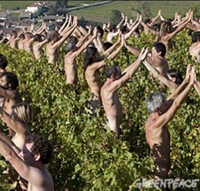 SIPPED: disclosure
SIPPED: disclosure
The FTC has promulgated new guidelines that include disclosure of “material connections” (in cash or kind) for bloggers as of December 1. Should this apply to magazines, newsletters, or online magazines? Why not? As discussed previously, enforcement will be an issue.
SIPPED: more nudity and wine
In Burgundy, 713 people take off their clothes to be photographed among the vines–all in the name of demonstrating against global warming. Randall Grahm had the bon mot on twitter: “Cotes de nue-its?” [greenpeace.fr]
SIPPED: Hong Kong
Hong Kong surpasses London and NYC as the largest wine auction market according to a story on Reuters. The Asian market for wine is “in danger of overheating” while the US is “weak” according to David Elswood, Christie’s international head of wine.
RIP: Gourmet magazine
After a review by McKinsey consultants, Conde Nast has decided to close Gourmet, the venerable food magazine. But if BusinessWeek, which lost $43 million last year, has attracted many bidders, why isn’t Conde putting Gourmet up for sale? Or making Anna Wintour stay at an EconoLodge?
SIPPED: changes in NYC dining
The new Michelin guide NYC comes out tomorrow; Daniel has been promoted to three stars, Alto rises to two stars and Corton debuts with two. Why Eleven Madison Park only gets one star is anyone’s guess. [Bloomberg]
Also in NYC dining, Chanterelle will now be closed permanently. Their long-time sommelier, Roger Dagorn, will now join Porter House according to Off the Presses.
And in NYS, the State Liquor Authority has a backlog of 3,000 applications; a report suggests a bureaucratic overhaul that may include making BOYB easier for new restaurants. [NYP]
Scottish wine, NY lobbying, tree planting, OWC – sipped and spit
SIPPED: Scottish wine?
French chefs have urged President Sarkozy to seal a deal at the Copenhagen climate change talks this fall–or risk ceding some the world’s prime vineyard sites to…Scotland! [independent.ie]
SIPPED: lobbying
The Village Voice looks at the jockeying behind the legislative initiative to allow supermarkets to sell wine.
SIPPED and SPIT: growth (of the viticultural kind)
The AP offers more reporting on the coming harvest “under economic cloud.”
SIPPED: a second life for those OWCs
Wine crates as serving trays.
SIPPED: tree planting
An Australian winery will attempt to offset its carbon emissions by planting up to 10,000 trees worldwide. Let’s hope the trees fare better than those planted for Coldplay! [Perth Now]
SPIT: a tip of the hat
In the recent double issue, NY mag ran a long piece about ethical eating that included a mention of the carbon footprint of wine. Ditto Newsweek in their current double issue.
SPIT: bottled water
Mother Jones has a long article on the making of FIJI bottled water.
Wine bottle recycling is low – but some bottles getting lighter
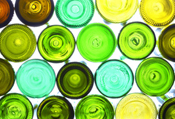 The EPA reports that 28 percent of glass packaging was recycled in America in 2007. If you think that’s low, consider the number for wine (and liquor) bottles: 15 percent.
The EPA reports that 28 percent of glass packaging was recycled in America in 2007. If you think that’s low, consider the number for wine (and liquor) bottles: 15 percent.
It’s a bit of a puzzle why wine (and liquor) bottle recycling rates are so low nationally. While some municipalities require bottle recycling, many more clearly do not. The consumption pattern of wine is amenable to recycling, it would seem, since it’s consumed in a dining room or restaurant: Unlike single-serve water or soda bottles, corks are generally pulled only a few paces from a recycling bin.
Hopefully this rate can rise. The NYT reported that in April, House Democrats introduced a proposal to place a five cent deposit on all beverage containers. (If that ever sees the light of day, hopefully unreturned wine bottles will not see the deposit go to the wholesaler rather than the state’s coffers.) Even though deposits are small where they exist now, the EPA report indicates recycling rates for glass beer and soft drink bottles are more than twice that of wine (and liquor) bottles at 34 percent.
Meanwhile, wine producers are slimming the weight of their bottles. Jancis Robinson once posted a “name and shame” list of heavy bottles. But now the pendulum is starting to swing the other way, if somewhat slowly compared to other drinks. Overseas, Torres is slimming their bottles. Fetzer Vineyards, one of the largest American winemakers, has announced 16 percent lighter bottles. Why? Not only are lighter bottles cheaper for the producer to buy, but the lower mass means lower carbon dioxide emissions during transportation.
On a related note, longtime readers might be interested to note that the paper that I co-authored on the carbon footprint of wine has been published in the current issue of the Journal of Wine Research.



